Recent Articles
Popular Makes
Body Types
2016 Mercedes-Benz Metris: First Drive Review
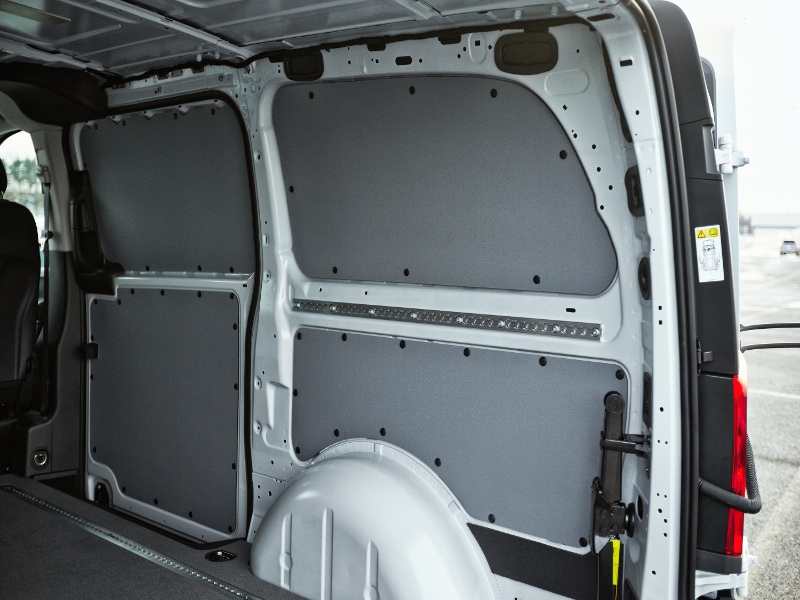
The 2016 Mercedes-Benz Metris is an all-new midsize van, slotting in just below the Sprinter, a successful product for the company. This is the other side of the three-pointed star. When we usually think of Mercedes-Benz, we tend to conjure up images of expensive, opulent cars. But it also produces excellent commercial vehicles. Most of this output is in Europe, but now the United States has two such choices in the Sprinter and the Metris.
While the former is a full-size van, the latter could be just the right size for many businesses. It can handle tight city streets, fit into multi-level parking structures and even be parked in some home garages.
The Metris goes on sale in October 2015, so it’s still too soon to evaluate total costs of ownership, but Mercedes-Benz has already made the Sprinter a worthwhile proposition, having won Best Fleet Value awards for the last three years running and been recognized as enjoying the highest resale values in its class.
Models and Pricing
The choice is simple: cargo or passenger van. The cargo version starts at $29,945; the passenger version starts at $33,495. Both prices include $995 destination charges. There won’t be an array of variants. It’s one height, one wheelbase and, so far, one drivetrain.
The cargo version has just two seats up front, a passenger-side sliding side door as standard, and its rear doors can open to a really useful 270 degrees. The passenger Metris can accommodate up to eight occupants and sliding doors are available for both sides. These can also come with a powered option. It is possible to remove the second and third row of seats, but it’s not something to do on a frequent basis, since they’re quite heavy.
While we’re talking money, Mercedes-Benz puts service intervals at 15,000 miles and plans on having each vehicle in the shop for as short a time as possible, so it can be back out on the road earning its living.
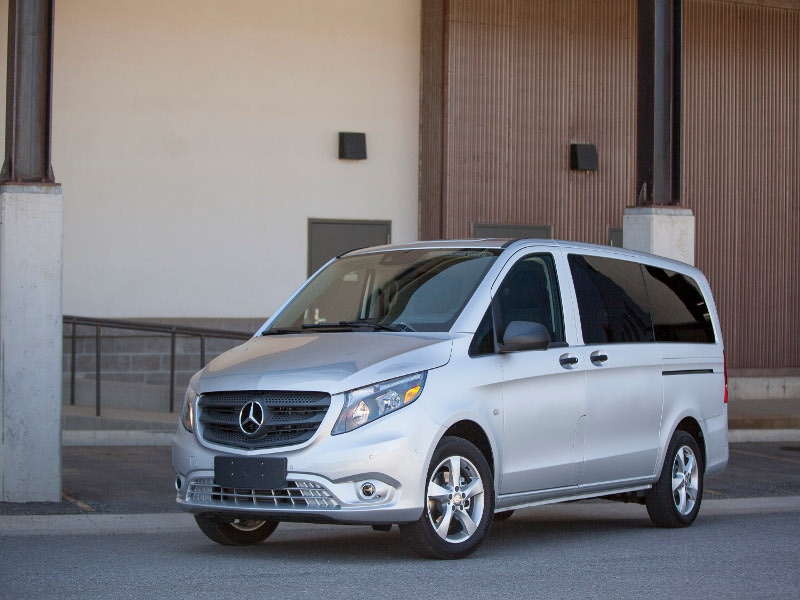
Design
Just like the Sprinter and its rival, the Ford Transit, the Metris follows the European school of van design: kind of narrow, kind of tall. Having a big three-pointed star set into the grille gives it some cachet and it’s certainly agreeable to look at. A large windshield helps with visibility and keeping the cab light, and the passenger version could easily be mistaken for a family minivan — although Mercedes-Benz doesn’t want to market it as such.
The basic dashboard (a posher version is optional) seems to borrow most of its shapes, materials and equipment from the least-expensive Mercedes-Benz cars from a few years back. It’s not unpleasant, but doesn’t look cutting-edge either. Function would be the key word here, since it’s a working vehicle and has no other requirement.

Comfort and Cargo
A tired driver is not good for business, so the Metris does its best to keep fatigue at bay. The driver’s seat has plenty of support for the back and thighs, while adjustable armrests are standard for both front seats. All seats are covered in a tough-looking fabric that’s still easy on the eye.
The steering wheel adjusts for height only, but most people should find a decent driving position with a minimum of fuss. The most remarkable fatigue-combating aspect, though, could be how quiet the Metris is to drive. It keeps wind whoosh, tire roar and engine noise to an absolute minimum.
Although customers may want their Metris vans to be kitted out in special ways according to the work required, cargo versions start out with a maximum space of 111.5 inches deep (with a through-loading partition), 66.3 inches wide and 55 inches high. Total cargo volume is 186 cubic feet, while payload is 2,502 pounds. Gross vehicle weight is 6,742 pounds and maximum towing capacity is 4,960 pounds.
Cargo models also have a wood floor as standard, which helps to keep the noise levels low. But lashing rails are part of an optional protection package.
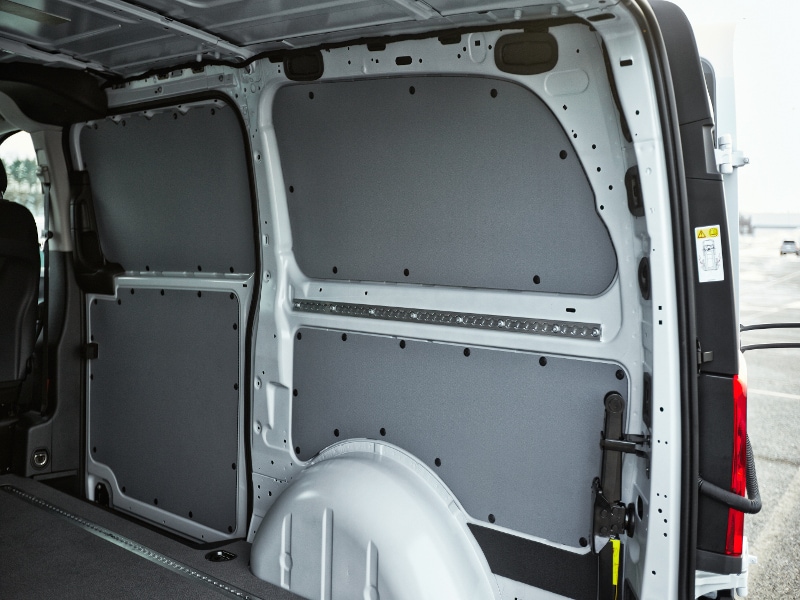
Features and Controls
The size of the Metris should make it useful to many: 202.4 inches long, 88.3 inches wide (including mirrors) and 75.2 inches tall. And the relatively small turning circle of 38.7 feet wall-to-wall could be a boon. Remember, the Metris was designed in Europe where city streets are often narrow and torturous.
A self-parking function that handles parallel and perpendicular spaces, satellite navigation, rearview camera, lane-keeping assist, blind spot alerts, and collision prevention assist are all on the options list.
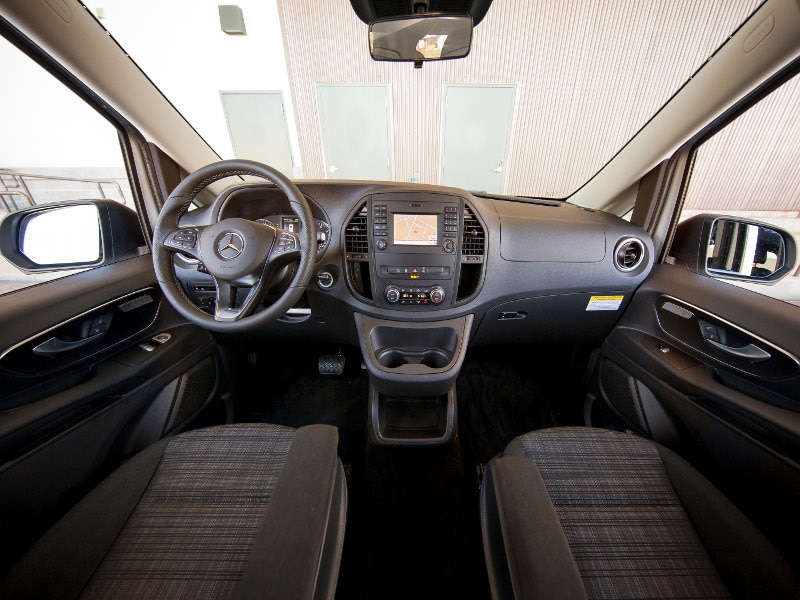
Safety
Crosswind assist (where separate wheels are braked to prevent the van from being blown off course) is a proprietary Mercedes-Benz system that comes as standard, along with a load-adaptive electronic stability program and driver attention assist.
The Metris houses six airbags. There’s the usual duo in front of the driver and passenger, plus two for thorax protection and another pair for the sides. The side airbags in the passenger model are longer than the cargo version’s, covering the full length of the seating area.

Engines and Fuel Economy
Despite Mercedes-Benz building excellent diesel engines for many of its other vehicles, the Metris comes with one gasoline-powered, 2.0-liter, four-cylinder unit that makes a turbocharged 208 hp and 258 lb-ft of torque. This modest amount of muscle goes to the rear wheels through a seven-speed automatic transmission with steering wheel-mounted shift paddles.
There are no EPA consumption figures just yet, but an optional Eco mode stops and re-starts the engine, which should really make a difference in city driving. On longer trips, an average of 28 mpg is absolutely possible. Mercedes-Benz recommends 91-octane gas because of the turbo, but concedes that 87-octane is fine.

Performance
Naturally, both the engine and the gearbox are fine examples of Mercedes smoothness. And even if power is not prodigious, it’s perfectly sufficient for most applications.
As well as a surprisingly quiet cabin, the Metris drives with a serene composure — much like an SUV or crossover. There’s that similar elevated driving position, while responses to driver inputs don't feel anything like those uncivilized vans of the 20th century. The steering actually has a nice directness to it because the driver sits so near to the front axle.
The suspension tune is different for each version, though. The passenger model has the slightly softer ride of the two; the cargo van’s is beefed up to take heavier loads — but don’t worry, it’s still perfectly comfortable.

Final Thoughts
Apart from being the cheapest new Mercedes-Benz on sale in the United States, the Metris should follow the example set by its bigger Sprinter sibling of making a convincing business case for itself. The company knows it cannot compete with the really big players like Ford in terms of numbers, so it intends to compensate by offering great customer service. Mercedes has also recently announced links with more upfitting operations, companies that will furnish a van with equipment and/or functions for specific purposes.
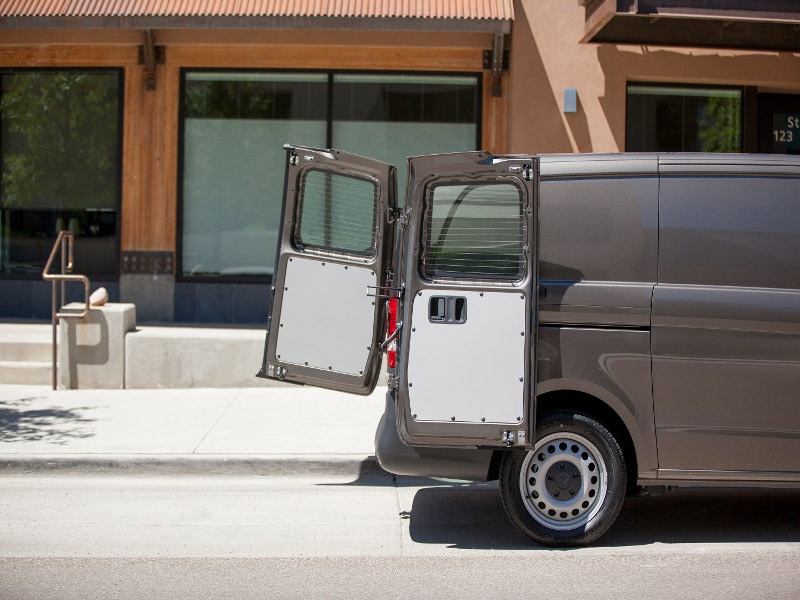
Pros and Cons
Pros:
Reasonable price, convenient size, car-like driving experience, crosswind assist, excellent optional parking assistance feature.
Cons:
No possibility of having a longer or taller version, no diesel option, no all-wheel-drive option, no powered tailgate option.
